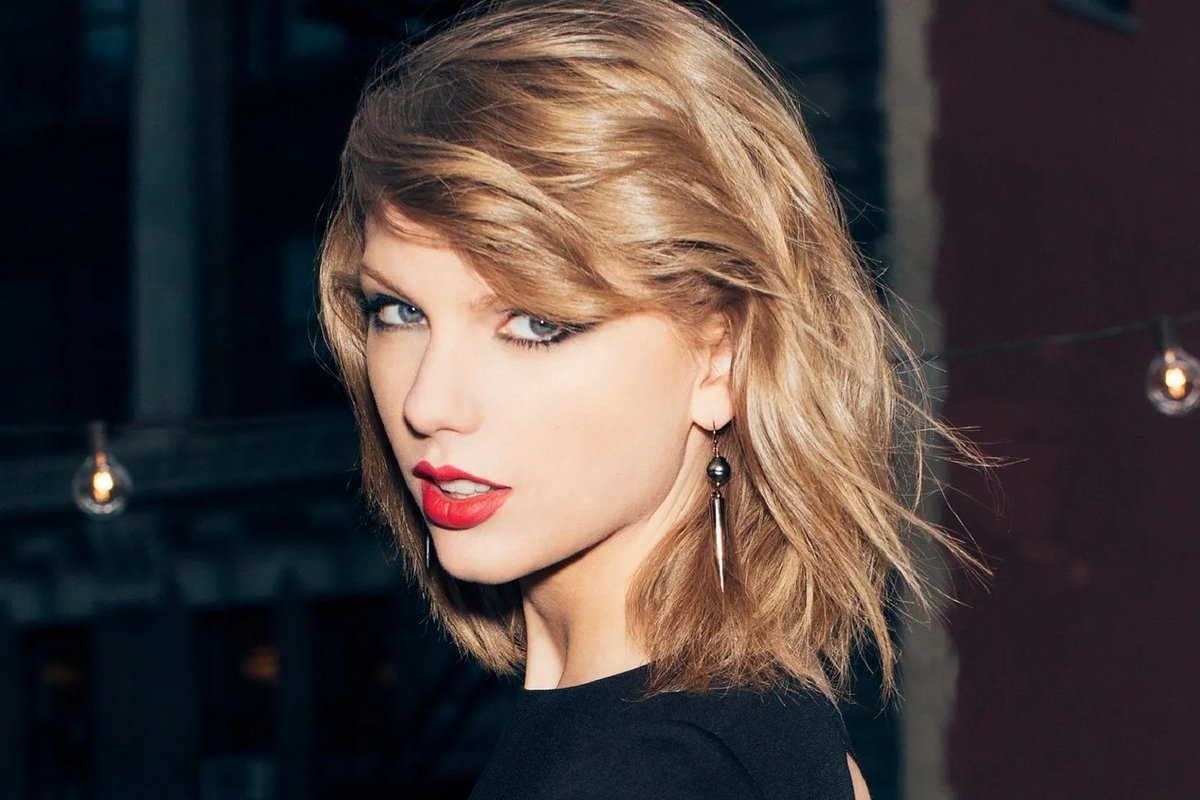1/ In 1957, Walt Disney drew his company's strategy (sketch below). It centered around content: good content fueled parks, merchandising, film & TV etc, all powering Disney's flywheel.
Disney has stuck to this strategy for 64 years, while also evolving to fit a changing world 👇
Disney has stuck to this strategy for 64 years, while also evolving to fit a changing world 👇
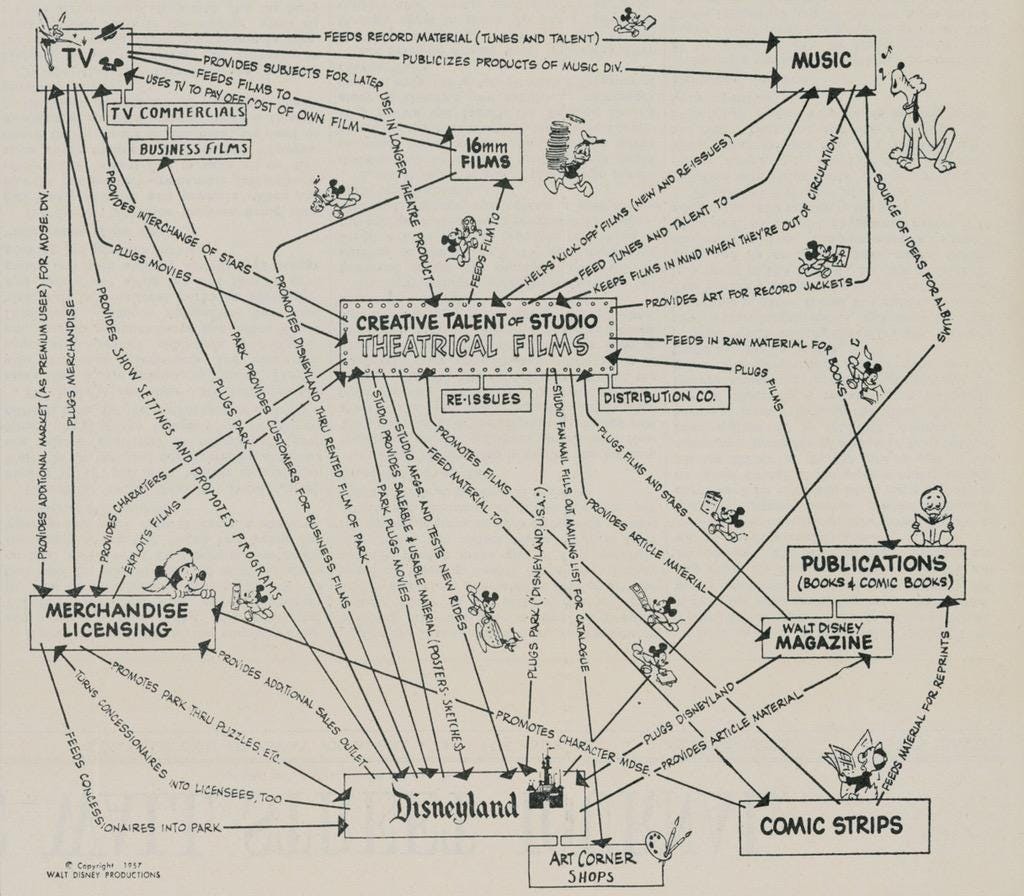
2/ I'm fascinated by how deeply Disney is embedded in culture (all around the world) & by the emotional reaction to the Disney brand. It all comes down to its characters & stories.
Disney's beating heart is its content—for example, *all* of these characters are owned by Disney:
Disney's beating heart is its content—for example, *all* of these characters are owned by Disney:

3/ Disney is at its best when it's producing high-quality IP. Its 90s resurgence was driven by fresh stories:
1989: Little Mermaid
1991: Beauty & the Beast
1992: Aladdin
1994: The Lion King
1995: Pocahontas
1997: Hercules
1998: Mulan
1999: Tarzan
1989: Little Mermaid
1991: Beauty & the Beast
1992: Aladdin
1994: The Lion King
1995: Pocahontas
1997: Hercules
1998: Mulan
1999: Tarzan
4/ That brought Disney out of a decades-long slump. In the 2000s & 2010s, CEO Bob Iger shrewdly *acquired* the best IP. He saw that content would be central to Disney's strategy & went on a shopping spree:
2006: Pixar, $7.4B
2009: Marvel, $4B
2012: Lucasfilm, $4B
2019: Fox, $71B
2006: Pixar, $7.4B
2009: Marvel, $4B
2012: Lucasfilm, $4B
2019: Fox, $71B
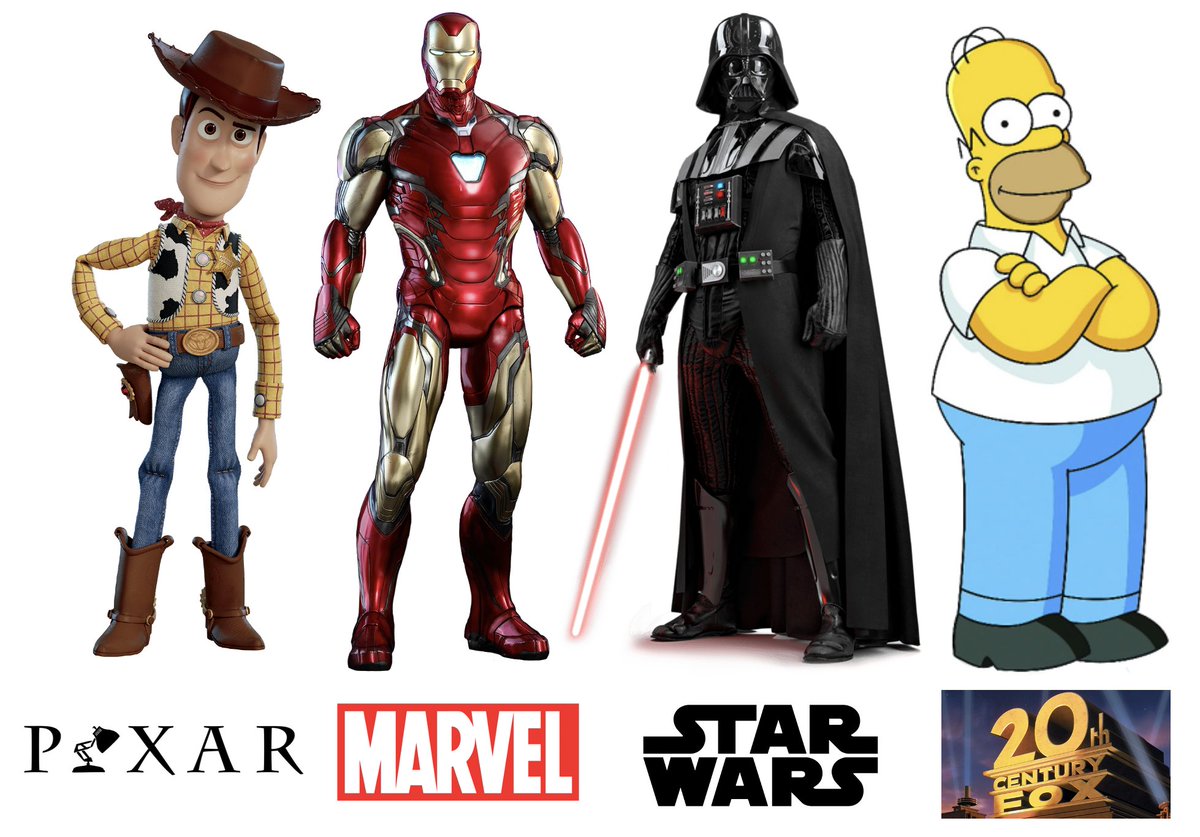
5/ New characters brought renewed life to Disney's theme parks. Bob Iger doesn't get enough credit for the performance of Disney Parks during his tenure:
In 2007, Parks was 30% of revenue & 22% of profit. In 2019 (pre-COVID), that share grew to 38% & 45%. Profit grew *400%*
In 2007, Parks was 30% of revenue & 22% of profit. In 2019 (pre-COVID), that share grew to 38% & 45%. Profit grew *400%*

6/ But Iger's ace was Disney+. While most of media was asleep at the wheel, he forced Disney to disrupt itself. Disney lost licensing money from Netflix & cannibalized its own TV and box office money.
Iger said, "The riskiest thing we can do is just maintain the status quo."
Iger said, "The riskiest thing we can do is just maintain the status quo."
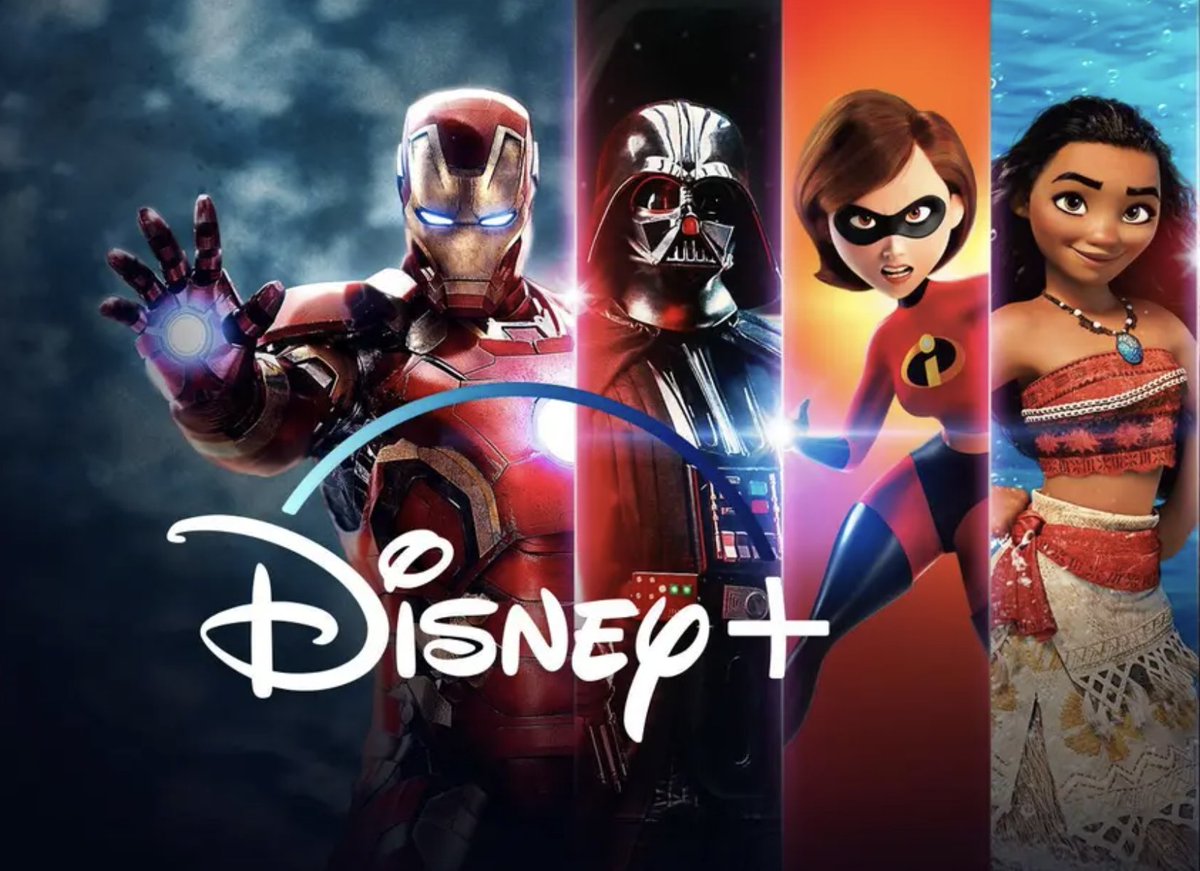
7/ It worked. Iger managed to turn the 95-year-old ship. Just look at how fast Disney+ came out of the gate: 
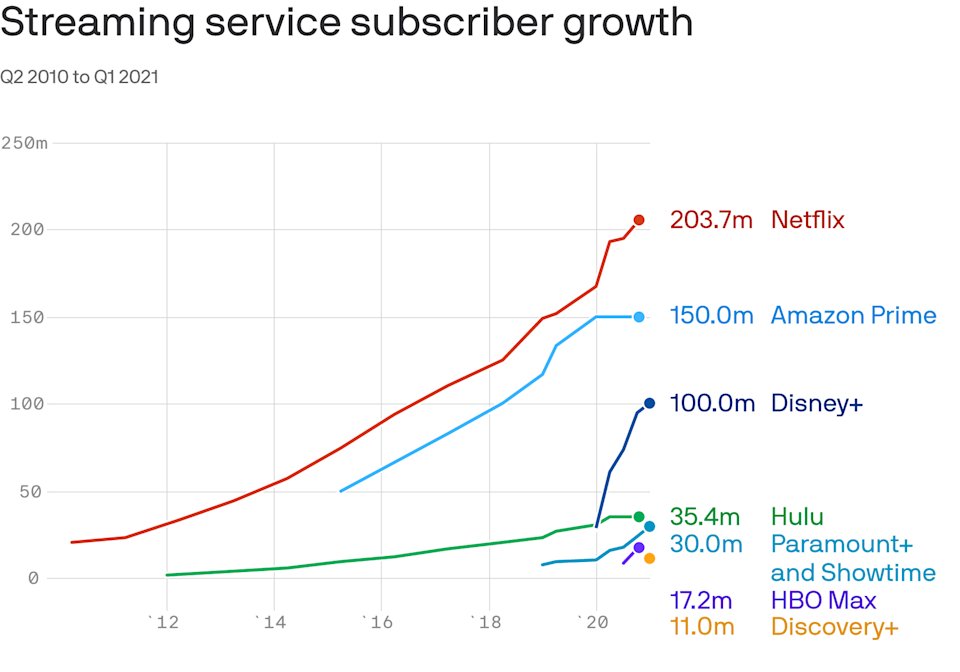
8/ Disney+ is now central to Disney's strategy. It gives Disney a direct relationship with customers & valuable data. Content is still king, but it flows through Disney+—& Disney+ creates fresh IP too (Baby Yoda, anyone?)
Here's my take at what the new flywheel might look like:
Here's my take at what the new flywheel might look like:
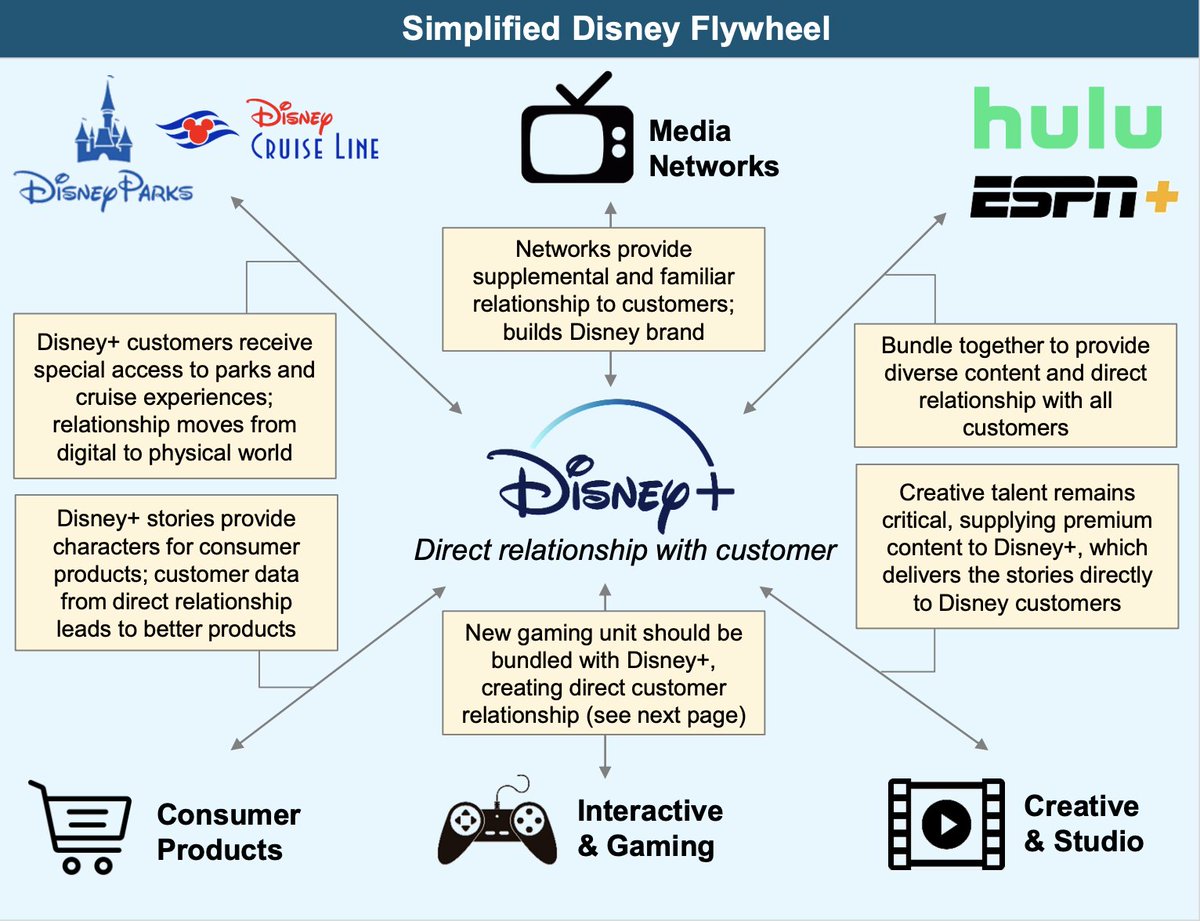
• • •
Missing some Tweet in this thread? You can try to
force a refresh








